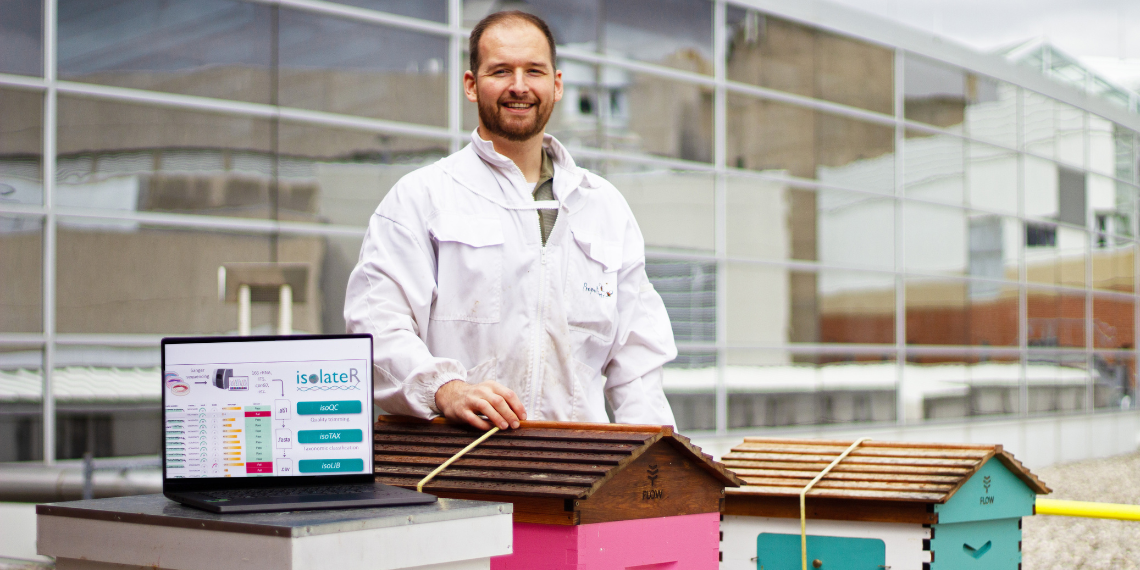isolateR: How a New Tool is Rethinking Microbial Identification and Discovery

We live in an age of rapid technological advancements. This is especially true when it comes to the field of microbiology. As new and sophisticated analytical instruments are developed, our knowledge of how microbes interact and influence the world around them is growing at an unprecedented rate.
One consequence of these technological advancements is the sheer volume of data generated, particularly DNA sequencing studies for profiling microbials communities. When researchers publish large volumes of data, this is affectionately referred to as a "data dump," where they struggle to find meaningful insights in their analyses without spending hours and hours combing over their findings.
And while sharing these results is undoubtedly valuable, a major issue lies in the inconsistency in analysis of these datasets. Researchers often rely on a patchwork of highly complex software programs to try to make sense of their data.
Without a consistent and reliable method to organize and analyze information, you could say that large data processing is currently in its "wild west" stage. Research groups are left to their own devices, with a lack of user-friendly tools to verify their data.
This is where Dr. Brendan Daisley, a Banting postdoctoral fellow in the laboratory of Dr. Emma Allen-Vercoe in the Molecular and Cellular Biology department, comes in. Daisley’s work focuses on exploring the gut microbiome of honeybees to improve the health and resilience of these essential pollinators. Part of the Canadian Bee Gut Project, the project involves discovery and classifying new microorganisms from beehives across Canada.

Microbiome research is the epitome of large volume data analysis. A single sample from an animal gut can contain hundreds of microbial species, represented by millions of genes. But because little is known about the resident microbes of bee guts, verifying the accuracy of species identification — especially when it involves discovery of new species — was paramount to Daisley.
Inspired by the challenge, Daisley set out to develop a user-friendly, accurate and reproducible method for classifying new bacterial species. The result is isolateR, a new software tool that both simplifies and standardizes the process of data analysis, while improving the accuracy of results.
“We were looking for a way to not only improve the speed of microbial identification, but also enhance the accuracy and precision,” explained Daisley. “The goal is to standardize data analysis and reduce user error.”
isolateR is expected to make a big difference to research in diverse fields, including microbiology and bioinformatics. The implications of having a program that efficiently analyzes and organizes data are monumental. It dramatically reduces the amount of time spent on data analysis and by standardizing the process, minimizes the risk of misclassifying novel microbial species.

The tool offers other benefits as well. As datasets grow larger and more complex, so too does the accompanying statistical analysis. For many researchers, it can feel like a gargantuan task to begin to understand these statistics. But isolateR has a solution for that too, providing visual representations to help researchers grasp complex trends and other statistical outputs.
“Visuals are not just a convenience; they are essential to understanding the data,” explained Daisley. “Like the saying goes, ‘A picture is worth a thousand words.’ The aesthetics of the data processing pipeline was always a consideration. Our goal was to make isolateR as user-friendly as possible, visually intuitive, and accessible to all audiences.”
Another unique feature of isolateR is its ability to create a custom database using the data generated during analysis to serve as a reference point for future comparisons. This eliminates the need to seek out other software programs to organize and compare datasets, which can help support collaboration between different research groups. Best of all, isolateR is freely available and accessible.
While isolateR was designed to aid in the discovery of new microbial species, the real strength of the tool is its broad applicability.
“Whether you’re focused on uncovering new species or simply identifying a small subset of microbial isolates from a given community, isolateR makes the process faster and more accurate for all researchers.”
Learn more about the Canadian Bee Gut project.
Read about isolateR in Bioinformatics.
Read about other CBS Research Highlights.